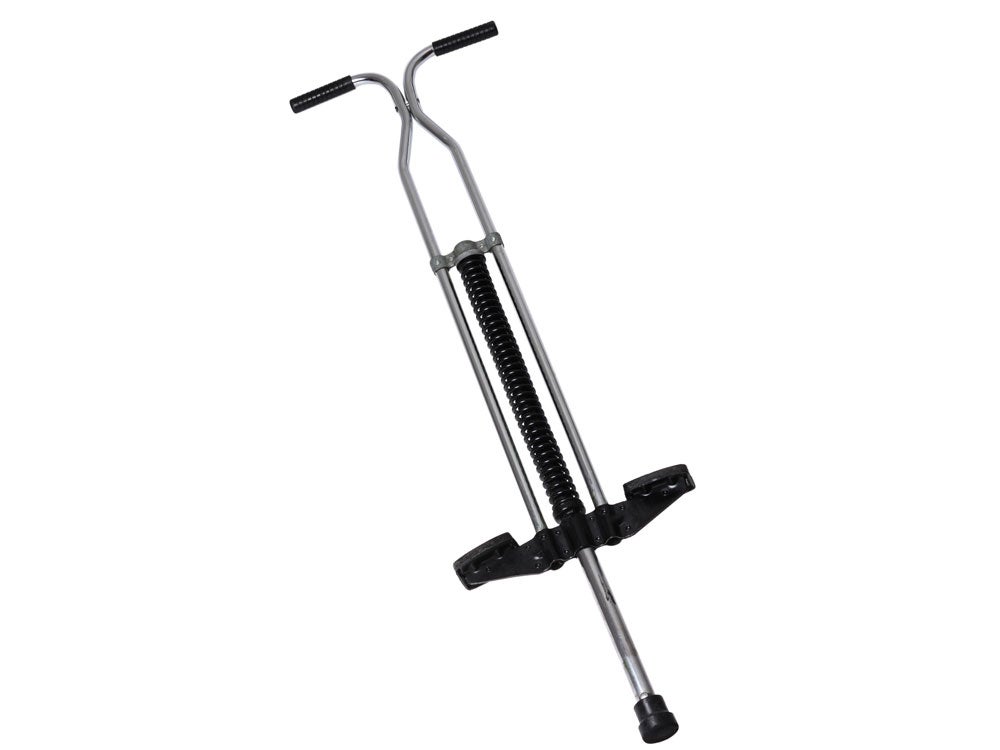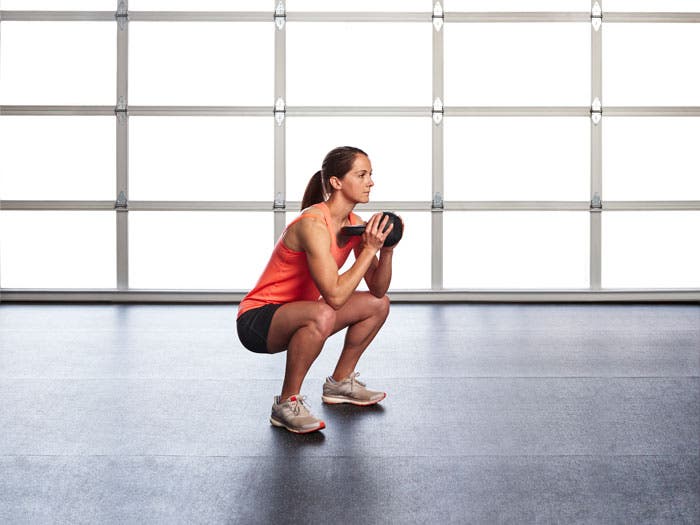Want to Run Better? Think of Your Body as a Pogo Stick

Imagine your body is a pogo stick. If your pogo-stick-body has a spring that’s too soft, it’ll be mush when you try to bounce (or run), and you won’t go far. If the spring is stiffer and appropriate for your weight, it’ll rebound better and launch you a greater distance. Lucky for you, the spring you came with isn’t all you get; you can build a better one, leading to better form and faster running. Just practice the movements that will achieve these three objectives:
1. Objective: Produce more horizontal force with front-to-back movements that engage the powerful muscles around the hips.

Your Move: Landmine Single-Leg Deadlift (3 sets of 8 reps/leg)
Position one end of a 45-pound Olympic bar on the floor in the corner to anchor it.
With the free end of the bar perpendicular to your body, stand on your outside leg, and hold the bar in the opposite hand; let your arm hang down straight. Raise your free arm out to the side for balance if needed.
Hinge your hips back while keeping your spine completely straight, and lower the bar while raising your back leg behind you.
Push your hips forward into the bar to return to the starting position.
Face the opposite direction to work the other side.
2. Objective: Establish better postural control in your core by moving heavy loads, which requires core engagement that anchors the legs and upper body.

Your Move: Suitcase Carry (four 30-second carries)
Hang a kettlebell or dumbbell in one hand at your side.
Keep your shoulder blades packed down along your ribs and actively counter your tendency to lean away.
Hold yourself completely vertical as you walk for 30 seconds.
3. Objective: Produce more vertical force with mostly up-and-down movements that split the work between the muscles around the knees and the hips.

Your Move: Kettlebell Squat (3 sets of 8 reps)
Hold a kettlebell tight to your chest in both hands with shoulder blades spread wide and locked down on the back—feet shoulder-width apart.
Staying centered over your feet, sink your hips back and down in a squat until your elbows touch your thighs.
Keeping a neutral spine (don’t arch your back), drive back up to standing position.
The Takeaway
Variety and repetition are the building blocks of motor learning and skill development. When you become stronger, your preferred muscle recruitment shifts from the front side of your body to the backside of your body. This allows you to maintain better postural control and put more drive into your gait. Some truly magical things happen to your running form once you change what your body is capable of achieving.